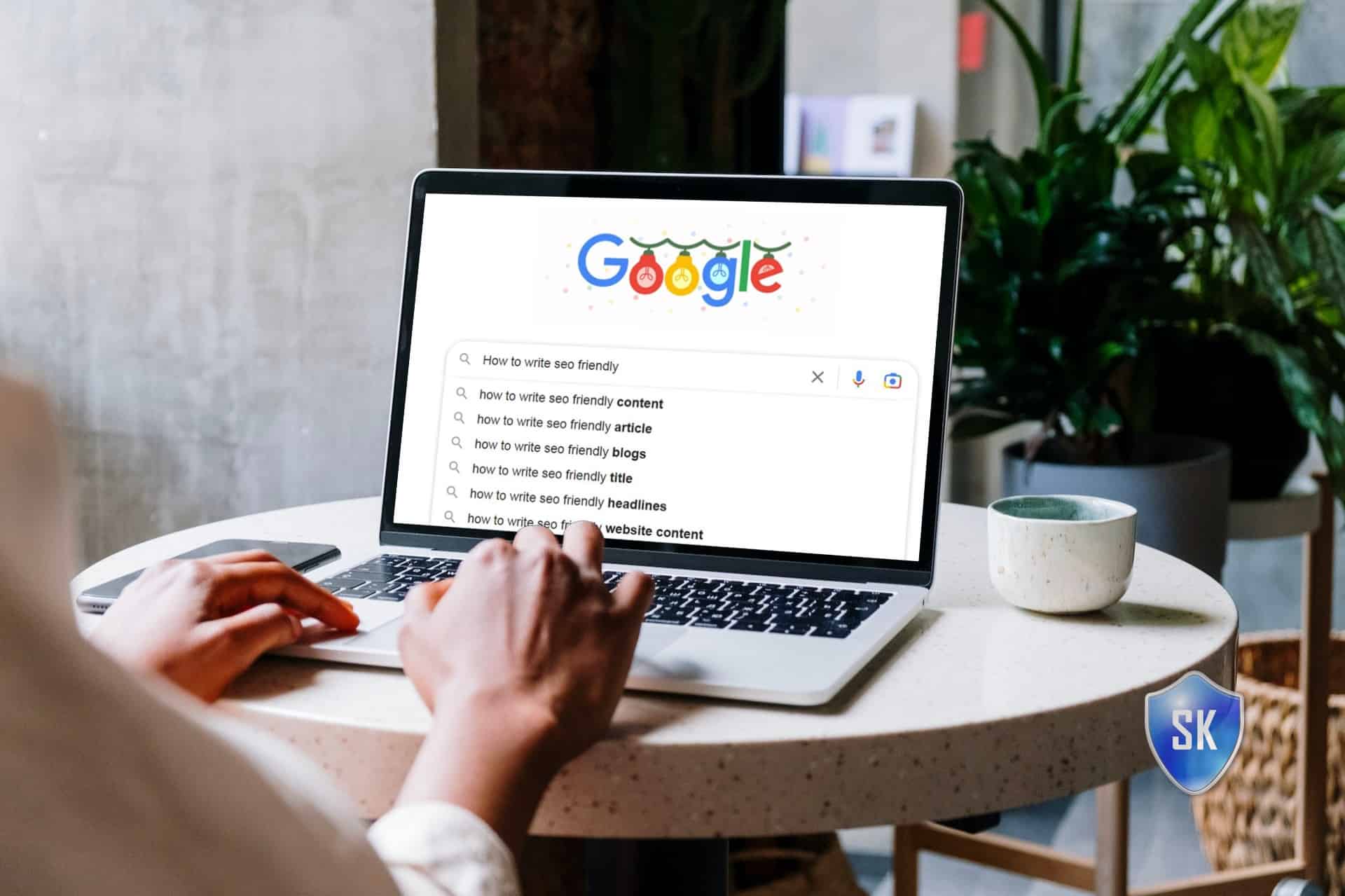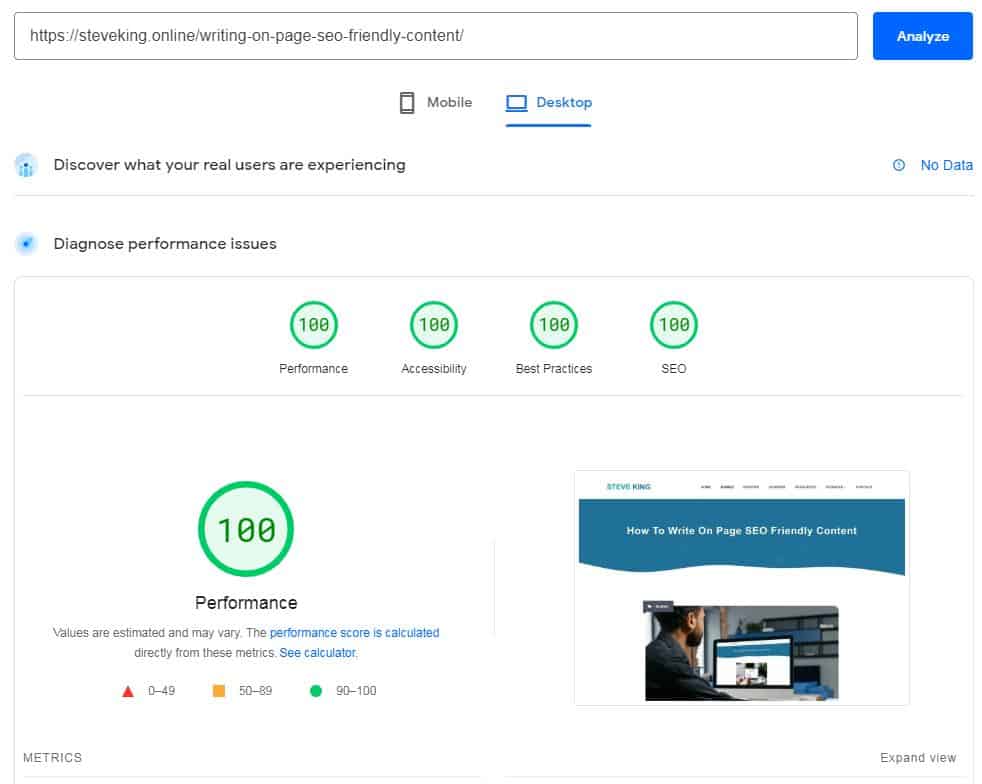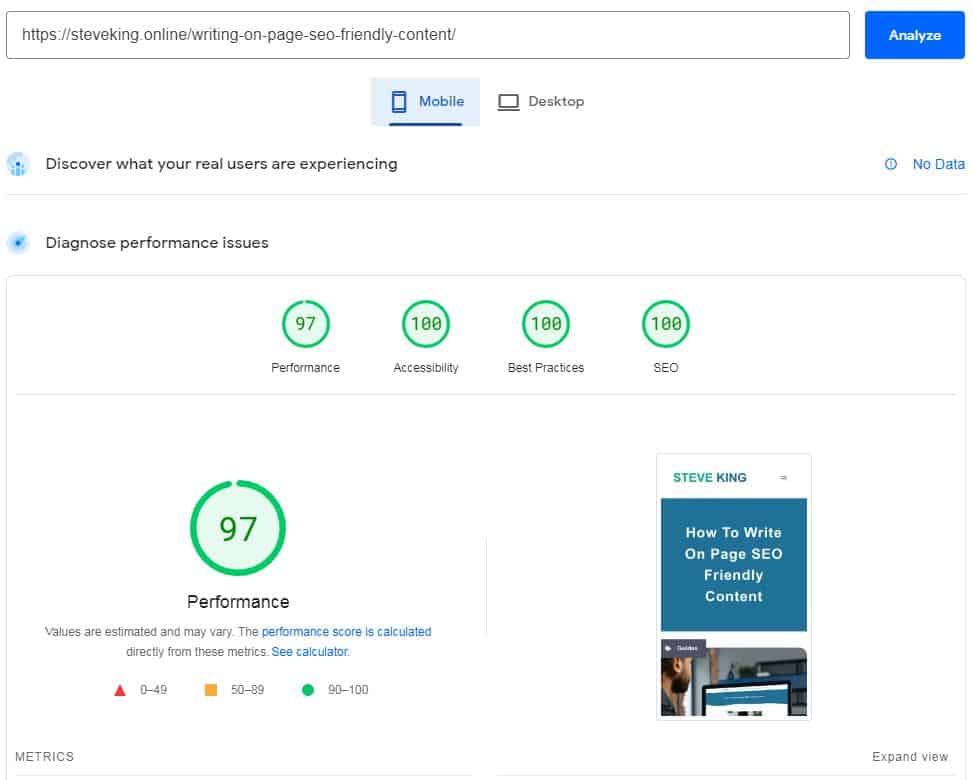On-page SEO can help improve the visibility of your website for organic (free) search results and deliver valuable traffic from potential customers who are actively searching for keyword-specific phrases that are related to what you offer.
It does require you to think about how search engine algorithms work and what keywords and phrases people were likely searching for when they come across your page.
It’s also important to understand the search intent of the person too.
But with the right techniques, you can create content that ranks well in Search Engine Results Pages (SERPs) and as a result get more visitors to your website
In this Guide, we’ll take a closer look at on-page SEO including how it works and the benefits it provides content writers when used correctly.
What we are going to cover
- What is On-Page SEO and why is it important for content writers
- The Benefits Of Using Keywords
- The Anatomy Of A SEO Friendly Post
- Optimise Titles, Media and Meta Descriptions
- Tips For Improving Readability
By following these tips, you will be able to create content that not only appeals to readers but also helps boost visibility in SERPs so people can find it more easily.
What is On Page SEO
On-page SEO is the practice of ensuring your content is easily discoverable by search engines.
It involves crafting blog posts in such a way that key elements like the headline, meta description and title tags are optimised for search engine visibility.
It is also about how the layout of the site is structured from a HTML best practice perspective.
Don’t put your heading tags (H2, H3, H4 etc) in the wrong position on the page in relation to each other.
All of this helps to ensure that relevant content is delivered to Readers faster and more efficiently resulting in higher user engagement and improved organic rankings.
What’s more, On-Page SEO also involves ensuring the quality of the content is maintained as high-quality content tends to rank better than low or average quality posts.
Using on-page SEO effectively can therefore be a not-so-secret weapon to gaining more visibility.
The Benefits Of Using Keywords
It is a good idea to include relevant keywords in your post to help the search bots understand what your content is about when they crawl your content.
The keywords and the schema of a page help search bots differentiate one piece of content from another, allowing them to understand the difference between a blog post or press release, for example.
They will report back to HQ with whatever they have found, good or bad.
Depending on how much attention you have put into your post, these crawlers could present positive or negative feedback about your post’s quality and structure.
By using the right kinds of keywords, at the right moments, and in the right places, you can give yourself a better chance of receiving ratings that reflect positively on your website.
Ultimately, the inclusion of helpful, relevant and appropriate keywords in a blog post can be beneficial for getting higher rankings in Search, but gone are the old days of stuffing a post with keywords and ranking highly because of it.

The Anatomy Of A SEO Friendly Post
To maximize your blog’s potential, it’s important to understand the anatomy of a SEO friendly post.
Crafting a well-written post is no small feat! There’s so much to consider.
Here is an overview of what goes into optimizing your blog posts for SEO success.
Title Tags and Meta Descriptions
The title tag of your page, also known as the meta title, is the clickable link that appears on Google search engine results pages (SERPs).
It should be short, sweet, and to-the-point.
Less than 60 characters is recommended!
It should also include some relevant keywords or phrases directly related to your content so that searchers can easily identify what your page is about.
Additionally, make sure to include a meta description on each page.
This should be a brief summary of the content which includes relevant keywords or phrases as well.
Remember, no-one likes Clickbait
Optimised Content
The content itself should be optimized with relevant keywords and phrases as well.
Try using keywords in the first sentence or two of your post, in headings and subheadings throughout, and at least once per paragraph.
Doing this will help search engines more easily crawl and index your content so that it appears higher up in SERP rankings.
Additionally, make sure each post is long enough to provide value while being concise enough not to bore readers.
Internal Links
Your blog post should also contain internal links which point back to other articles on your site related to the topic at hand.
Internal Linking helps with Topical Authority and is one of Google’s many measures of a websites ranking position.
This can be done by simply hyperlinking certain words or phrases within each post; this will help keep readers on your website longer and create a better user experience overall.
Additionally, internal linking helps boost search engine rankings by giving Google bots more content to crawl and index from within your website itself.

How To Optimise Your Post’s Content
Besides careful keyword selection, other aspects such as engaging titles* that accurately describe the contents of the post, catchy visuals, and effective linking practices will help foster more engagement.
* Read my article that explains how to write the perfect blog post title
that’s a good example of an internal link
It’s about creating content that is engaging and provides value on top of having nice looking visuals.
Staying up to date with your industry’s trends can give you extra content ideas that help ensure you give readers valuable, up-to-date information that they’ll appreciate.
Researching topics properly and writing meaningful posts are essential components when it comes to optimising the impact of your blog post.
You need to research the topic and decide on primary keywords as well as secondary terms that relate to the topic.
To make sure you maximize potential readership, consider writing in an engaging and accessible voice.
Think about how you structure your post, think about the following
- Having an introduction
- breaking down the body of the post into easily digestible paragraphs
- with headings and subheadings
- then adding details like images, videos and clickable links
- Have a Summary or Conclusion
- And a call to action, which can be something as simple as recommending another post to read
these are all important elements of a successful blog post and in turn website.
Allowing readers to comment and engage with your content can amplify your reach.
But that’s often a trade off with the amount of spam you have to deal and whether it actually adds any value to your website.
I used to have my comments open for all my websites, but as a result, each month, I spent far too long dealing with time consuming things that never added any value…to anyone. It’s personal choice though!

Optimise Titles, Media and Meta Descriptions
It is important to craft an SEO-friendly title and meta description for each post in order to maximize the visibility of your blog.
I wrote an article about writing the perfect blog post title, this breaks things down into much more depth. It’s worth reading alongside this one.
Not only will this ensure that your content stands out, it also ensures readers find exactly what they are looking for!
Additionally, include alt tags with your images so that search engines can understand their content as well.
Alt tags provide the key information that helps search engines understand what’s being shown in an image, resulting in greater exposure and higher rankings.
It’s also important for Accessibility and people who use screen readers, but this is a whole topic in itself.
All of these things, when done correctly, should help boost SERP visibility resulting in increased website traffic.
Tips For Improving Readability
It is important to ensure that your posts are easy to read.
Proper formatting techniques can make a huge difference in the readability of your blog post.
Begin by breaking up long sections into digestible chunks with clear headings and subheadings as this will draw attention to key points and make it easier for readers to quickly scan through the article.
Additionally, using images when appropriate can help make your posts more visually appealing, as well as break up larger blocks of text.
Be sure to keep your sentences concise and focused on one point or idea at a time;
this will help bring clarity and organisation to your posts so that your reader can clearly understand them.
Finals Thoughts
So there you have it, an overview of the things you need to know about on-page SEO and how it can help improve your website’s visibility in organic search results.
When used correctly, on page SEO techniques can be highly effective in helping your content rank well in SERPs and drive valuable traffic to your website.
It’s an important part of creating content that ranks well in Google Search, but there are other pieces of the jigsaw that needed to be considered hand in hand, which are:
- How To Write Great Blog Titles
- How To Write A Great Blog Post That Ranks Well
- Understanding Search Intent When Writing Blog Posts
Treat them as equals and become a Master of each





